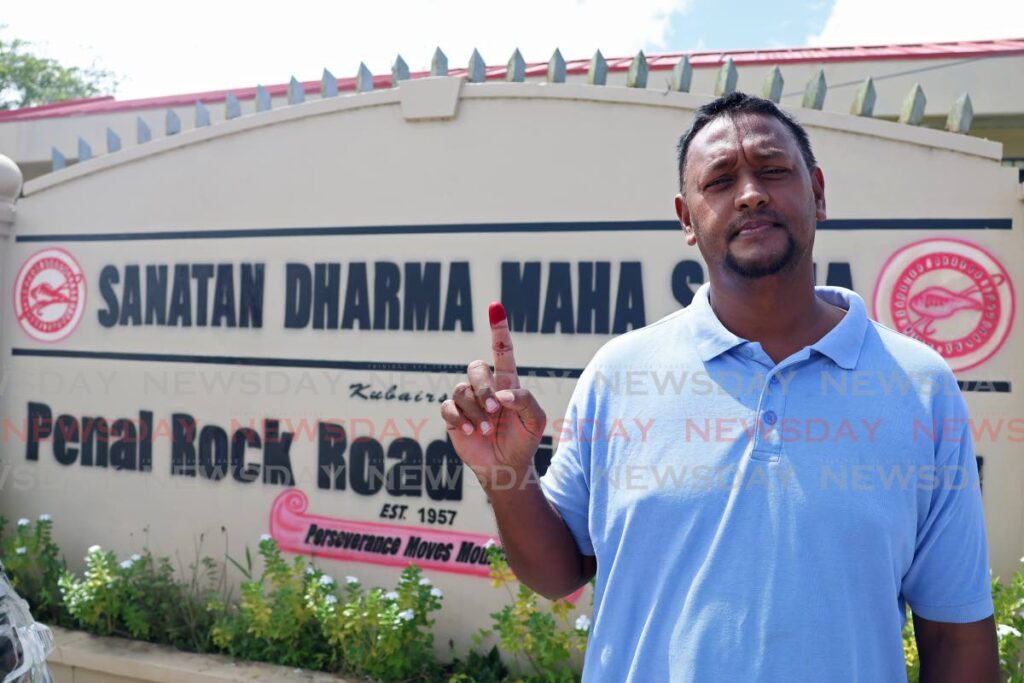Your election day guide – What to expect at the polling station

ON March 18, less than 48 hours after being sworn in as the eighth prime minister of Trinidad and Tobago, Stuart Young announced the 2025 general election date for April 28.
The snap election date saw political parties needing to fill their candidates slate and citizens making their own preparations.
According to the Elections and Boundaries Commission (EBC), over 1.1 million people are eligible to vote in the upcoming elections.
Check your registration
To check your voter registration status, visit the EBC’s website at https://ebctt.com/electoral-process/registration-look-up/. You will need to enter your first and last name and your month and year of birth, to search the database. The website will also list your designated polling station for the 2025 general election. Additionally, calls can be made to the EBC hotline at 785-8206 or 785-8211.
For more details on registering to vote in the 2025 general election, read more here.
Finding your polling station
In the lead up to election day, the EBC mails poll cards to registered voters at the address tied to their registration. The EBC advises voters to check regularly for the poll card. Once received, review your poll card for the address of your local polling station.
If your physical poll card is not received, a poll card will be prepared at your polling station on election day.
Navigating election day
Voters have 12 hours, from 6 am to 6 pm, to exercise their constitutional right to vote. On election day, large crowds of voters arrive at their polling stations throughout the day. The stations are overseen by polling agents and other EBC staff members. Agents act on behalf of electoral candidates to witness the electoral process and ensure protocols are followed correctly.
A list of registered voters is posted outside the polling station. After confirming your name, address and number are on the list, you can join a line to vote. Colour-coordinated lines to vote are usually categorised by the first letter of one’s surname to help efficiently manage large crowds.
Disabled people have the right to register to vote and reasonable accommodation must be provided to facilitate their participation. Physically incapacitated, blind or visually impaired voters and their assistant join the red line while other voters join the green lines. People unable to sign their name may use a thumbprint or another fingerprint in place of a signature. They may authorise a relative or friend to sign on their behalf in the presence of the assistant registration officer or the authorised registering officer.
Voters who have a physical impairment are allowed to use a voting template provided at the polling station. They may also enlist the assistance of companion of their choosing to cast their ballot on their behalf.
Casting your vote
Once you’ve arrived at the top of the line, a poll clerk will witness as you sign your poll card. You will then move forward to the deputy presiding officer who will examine your hands to ensure there is no evidence of electoral ink stains. Electoral ink is made of a dye, which lasts on the skin for a period of time and ensures that voters cannot cast their vote multiple times.
The ink is very difficult to wash off, even with the most aggressive cleaning solutions.
Once the deputy presiding officer is satisfied that you have not previously voted, you will be issued a ballot paper and shown how to mark and fold the ballot paper using an example ballot.
You will also be shown how to use the stamp to cast your vote.
The deputy presiding officer will initial your ballot paper before folding it and handing it to you.
Cameras, cell phones and other electronics are not allowed in the polling booth.
After removing these items, voters will be allowed in the booth.
To vote, you use the stamp, with an X mark, next to your preferred candidate’s name and political party symbol on the right side of the ballot.
If you make a mark other than an X or you place the mark outside of the designated area, your ballot will be rejected and not counted towards your preferred candidate.
After you have stamped and folded your ballot paper as previously shown you will proceed to the officer in charge of the ballot box.
At this point, you will be required to display your folded ballot showing the initials of the deputy presiding officer and polling station number. While placing your ballot in in the ballot box, voters are required to dip their finger in the electoral ink.
Voters will not be allowed to cast their vote if they refuse to dip their finger in the ink. Once you have stained your finger, you have successfully completed the voting process.
Voters encountering any issues at the polling station are free to alert the presiding officer or ask for help from any EBC staff member.

Comments
"Your election day guide – What to expect at the polling station"